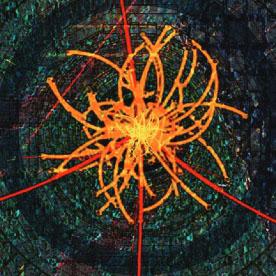On Wednesday, Nov. 20, 2013, in Washington, D.C., President Christina Paxson and members of the Brown Department of Physics celebrated the role U.S. scientists played in the 40-year quest to find the Higgs boson. The existence of the particle was predicted by several physicists in 1963, but it wasn’t until July 2012 that the particle was finally detected at the Large Hadron Collider in Switzerland. Nearly 2,000 physicists from the United States worked at the LHC during the Higgs search. Faculty joining Paxson at the celebration, hosted by the House Science and National Labs Caucus, included James Valles, chair of physics; David Cutts, who works with the LHC; and Gerald Guralnik, one of the original theorists who predicted the particle; and graduate student Juliette Alimena. Professors Ulrich Heintz, Greg Landsberg and Meenakshi Narain also played key roles in the search. Landsberg serves as physics coordinator for the CMS experiment, one of the two large detectors used in the search. This year’s Nobel Prize in Physics went to Francois Englert and Peter Higgs for their theoretical work. The Higgs Boson is the manifestation of an invisible field that breaks the symmetry between the electromagnetic force and the weak nuclear force. That field explains why leptons and quarks — the building blocks of matter — have mass while photons (particles of light) do not.
Read more
